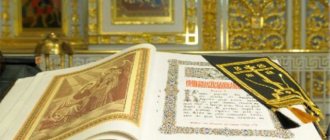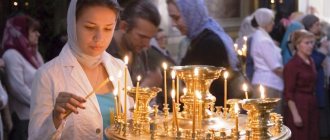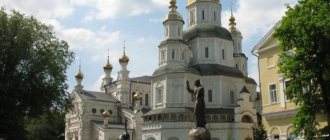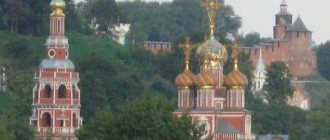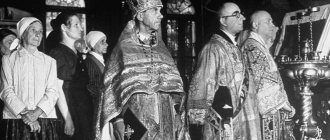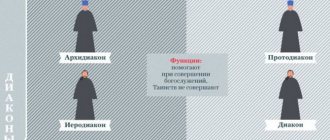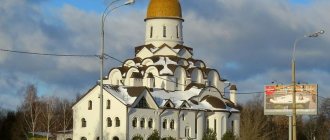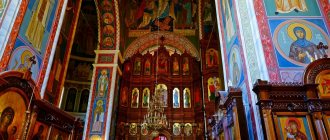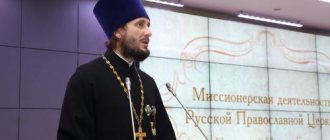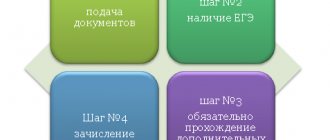Temple of Alexander Nevsky in Pskov (Russia) - description, history, location. Exact address and website. Tourist reviews, photos and videos.
- May tours
to Russia - Last minute tours
to Russia
1/
10
Temple of Alexander Nevsky in Pskov A.Savin, Wikicommons
Not far from the stormy Velikaya River, which flows through Pskov, rises the Military Church of the Holy Blessed Grand Duke Alexander Nevsky - this is its full name.
Erected in 1908, it belonged to the 96th Omsk Infantry Regiment for a long time. The temple still actively helps the military and their families, veterans who have been in “hot spots.” Thanks to the educational activities of the temple, books dedicated to the victims of the war were published, portraits of all the fallen Pskov paratroopers were collected. Their names are also immortalized on the walls of the building.
Architecture and museum
Despite the fact that the cathedral was built according to the standard design of military churches, it still stands out among traditional religious architecture. His style can be described as late Russian eclecticism - the exterior decoration includes zakomars (semicircular ends of the outer wall of the building, repeating the contours of the vault) and oddly shaped kokoshniks.
The temple attracts attention with its color scheme - it is built of red brick, the roofs are painted green, and the bright blue domes are topped with gold crosses. A bell tower equipped with 8 bells rises above the main building.
The bells here are also unusual - they were cast by Pskov blacksmiths, the lightest weighs about 10 kg, and the heaviest - more than 600 kg.
However, the Pskov temple is known not only for its architectural beauties. Its interior is quite typical for Orthodox churches, but at the same time it is distinguished by moderation in painting. The main wealth of the church is its extensive collection of icons and a beautiful iconostasis, received as a gift from Patriarch Alexy II in 1996.
The temple has its own museum with many unique exhibits. A copy of the Old Testament with notes from Emperor Nicholas II and the cassock of John of Kronstadt are kept here. You can also see many beautiful images here - for example, the Kazan Icon of the Mother of God or the Icon of the Most Holy Theotokos “From the Troubles of Those Suffering”. The temple also has its own small library.
Location
The military temple of the Holy Blessed Grand Duke Alexander Nevsky is located in Pskov on the left bank of the Velikaya River, not far from the Spaso-Preobrazhensky Mirozhsky Monastery. It was built for the 96th Omsk Regiment stationed in Pskov.
Construction and opening
The history of the 96th Omsk Regiment dates back to 1797, when the future winner of Napoleon, Lieutenant General M.I. Kutuzov, formed a huntsman regiment of the most educated officers. The regiment fought heroically in the Patriotic War of 1812, and received the name Omsk in 1863 after its merger with the Koporye Musketeer Regiment.
Soldiers and officers of the Omsk Regiment were invited to annual parades at the Winter Palace and performed guard duty in St. Petersburg. The 96th Omsk Infantry Regiment fought for the liberation of Bulgaria from the Ottoman yoke in 1877–1878. Until November 1917, the regiment took part in battles on the Western Front of the First World War, then was disbanded.
The Pskov City Duma petitioned the headquarters of the St. Petersburg Military District for the quartering of the 96th Omsk Infantry Regiment in Pskov. In 1894, construction of a military camp began on Zavelichye with the construction of barracks for soldiers and outbuildings for officers. By February 1898, the regimental canteen was converted into a house church.
The decision to build a stone temple was directly influenced by the President of the Russian Academy of Arts, Grand Duke Vladimir Alexandrovich, and Emperor Nicholas II personally. Its construction was part of the program of military reforms carried out by Russian Minister of War Alexey Nikolaevich Kuropatkin, a native of the Pskov province.
In 1905, the military department allocated funds for the construction of the temple, but work began only a year later. The temple was built according to the model design of the regimental church, which was drawn up in 1901 by civil engineer and court councilor Fyodor Mikhailovich Verzhbitsky.
Work on the construction of the temple was carried out by the Pskov Economic and Construction Committee for the construction of the church, which consisted of officers of the 96th Omsk Infantry Regiment. The work was supervised by Colonel, military engineer Dmitry Koronarovich Kostomarov.
The foundation stone of the regimental church took place in June 1907, and on October 4, 1908 it was lit by the Archbishop of Pskov and Porkhov Arseny (Stadnitsky).
History of the temple after opening (XX century)
The carved iconostasis of the open church was made of walnut wood and filled with copies of icons of Alexander Nevsky, Olga of Russia, Prince Vladimir and other saints, painted by the famous artist V.M. Vasnetsov for the St. Vladimir Cathedral in Kyiv. Eight copies of paintings by M.V. hung in the spaces between the windows. Nesterov and P.A. Svedomsky, above the entrances inside there is a large painting of the Sermon on the Mount.
In 1918, services in the temple were stopped. In the 1920s, the bell tower and the head of the temple were destroyed. Since 1947, the building of the temple housed the garrison House of Officers, and then the Military Medical Warehouse of the North-Western District.
Now the temple has been returned to the church. Since March 1992, daily services were resumed in the temple, and restoration of the temple began. It was restored in the shortest possible time by Pskov restorers according to the design of Moscow architects A.I. Khamtsova, N.S. Vasilenko and others.
In May 1992, the temple was visited by His Holiness Patriarch Alexy II, who donated to the temple the work of Palekh artists “The Life of Alexander Nevsky,” which was awarded the State Prize of Russia in the field of literature and art.
In 1995, 8 bells, donated by B.N., were installed on the bell tower of the temple. Yeltsin. The five main bells bear the dedicatory inscription of the first president of Russia. In June 1995, the consecration of the restored temple took place.
The temple today (in the 2000s)
For the 100th anniversary of the temple in December 2008, new bells cast in the Urals (Kamensk) were consecrated.
In front of the revered temple icon of the Blessed Prince Alexander (late 19th century) an unquenchable lamp burns. The fire for it was brought from the homeland of the Grand Duke - from Pereslavl-Zalessky.
Nowadays, the Church of Alexander Nevsky is a military temple of the 76th Guards Air Assault Chernigov Red Banner, Order of Suvorov Division, and its rector is mitred Archpriest Oleg Gayasovich Teor (born in 1944) - responsible in the Pskov diocese for the care of soldiers in the territory areas.
In 2001, the temple published a collection of poems dedicated to the fallen soldiers of the 6th company of Pskov paratroopers. In 2004, the book “And with your battle our hearts beat” was published in memory of all the fallen paratroopers of the Russian Federation.
The names of the dead Pskov paratroopers are immortalized on the walls of the temple, an archive is being compiled for the fallen soldiers, and correspondence is being conducted with their parents.
Through the efforts of the parish, a synod was created with photographs of fallen soldiers, the dates of their birth and death. Not far from the temple, a monument-chapel was opened in their honor. Every day their names, like other fallen soldiers, are remembered during the service.
Near the temple there is a stand with photographs of fallen soldiers of the 6th company of the 104th airborne regiment.
The temple was awarded a diploma from the Ministry of Defense and included in the book “Golden Chronicle of Glorious Deeds for the 1100th Anniversary of Pskov.”
Memorial monuments on the temple grounds
Near the temple there is an information stand dedicated to the history, restoration and revival of the Church of the Holy Blessed Grand Duke Alexander Nevsky.
Near the temple there are several memorial worship crosses: a cross in memory of those killed during the First World War, a worship cross at the “Holy Hill”, a cross at the burial site of the remains of those killed during the Great Patriotic War in a concentration camp located on the street. Yubileinaya (the remains were discovered during the construction of new houses).
For a number of years, near the temple, Archpriest Oleg and his assistants have been collecting the “Holy Hill”, stone by stone, on which a wooden cross is installed. Here lie stones that were lifted by divers from the bottom of the Izhora River, from the place where Alexander Nevsky won his first victory, as well as earth and stones from Alapaevsk, from Ganina Pit, brought by one monk from Yekaterinburg, from the Levashevskaya hermitage near St. Petersburg , from the Butovo training ground near Moscow. There are also stones from destroyed temples here. Stones and earth are brought here from their native places and from the places where soldiers of the Pskov garrison died. They also put stones under the formwork from the places where some miracle was performed. The hill near the temple became a keeper of memory.
Near the “Holy Hill” a bell was installed in honor of the victory in the Patriotic War of 1812 “in memory of the fallen soldiers who saved Pskov and the capital St. Petersburg from destruction. Previously, there was a tradition of installing bells, bells, and icons at churches. The acoustic properties of bells are not inferior to traditional bells, they have a beautiful sound timbre and are shaped like an Orthodox icon. In many Orthodox countries and nowadays in churches they call for prayer. Now this tradition is being revived in Russia too” (text taken from an information sign installed near the bell).
The beater is an ancient instrument, it is also called a “flat bell”. There are such in ancient monasteries (Athos, Greece). Scientists who come to the temple talk about the beneficial effect of its ringing on people.
The large boulders are symbolic. This is not a design element. “...and on this rock I will build My church, and the gates of hell will not prevail against it” (Matt. 16:17-19). This is a passage from the New Testament. Therefore, we can say that in a sense, the presence of stones indicates the significance of the temple, its strength.
In 2003, on the initiative of the Chairman of the Council of URARTU David Sarkisyan, the sponsorship of the Armenian diaspora of Pskov and with the blessing of the head of the Pskov diocese of the Russian Orthodox Church, in commemoration of the 1100th anniversary of the founding of Pskov, a memorial khachkar was erected on the territory of the Church of the Holy Blessed Grand Duke Alexander Nevsky - “cross-stone”, Shrine of the Armenian Church.
Archpriest Oleg Teor, who knows the history of Armenia and its Christian religion, played a major role in the establishment of the khachkar.
The monument to abortion victims near the temple is relatively new; it was brought and installed in December 2016 by pilgrims from Moscow.
Main architectural features
The military temple of the Holy Blessed Grand Duke Alexander Nevsky was built of red brick according to the exemplary design of regimental churches in the eclectic style.
It is a combination of a single-nave basilica in plan with a hipped bell tower above the western entrance, a refectory, and a large dome with a light drum in the eastern part of the temple.
On the northern and southern sides, the altar part is adjacent to the volumes of the deaconnik and sacristy, which are lower in comparison with the main quadrangle. The deacon house has a separate entrance.
A hexagonal apse protrudes from the altar. The porch is divided into three equal parts. A bell tower was erected above the middle part, and small domes (wooden, sheathed with metal) above the side parts. The entrances to the church are accented by porches.
Above the premises of the sacristy, the deacon and the side parts of the vestibule there are flat wooden ceilings.
There is a brick sail vault over the middle part of the vestibule. The plasticity of the church facades is created due to the abundance of decor made of hewn unplastered brick. The window openings are framed by platbands consisting of archivolts supported by semi-columns. The same motif is used to frame the doorways.
The quadrangle of the altar part, the pediments above the northern and southern portals are decorated with kokoshniks. The pilasters located in the window partitions also end with kokoshniks, cutting the frieze and cornice of the main quadrangle.
The interior of the temple is simple and austere.
Church museum at the temple
At the Church of the Holy Blessed Grand Duke Alexander Nevsky there is a church museum, the founder of which is the Honorary Citizen of the city of Pskov, rector, Archpriest Oleg Teor. He collected and preserved many shrines and museum values associated with the rich history of the ancient Pskov land.
The museum contains the Old Testament with notes from Emperor Nicholas II, the cassock of the righteous John of Kronstadt, the epitrachelion and cassock of Archpriest Nikolai Guryanov, the diary of Schegumen Luke (a inhabitant of old Valaam and one of the founders of the New Valaam Orthodox monastery in Finland, who later rested in the Pskov-Pechersky Monastery) and other shrines.
The museum contains old icons, crosses, handwritten and printed church books that require restoration; collections of Easter eggs, samovars, coins, broken bells.
You can see such rare icons as the Image of Our Lord Jesus Christ Not Made by Hands on a copper plate, the Most Holy Theotokos “From the Troubles of Those Suffering”.
The museum's exposition presents the Kazan Icon of the Mother of God, in front of which Pskov partisans prayed during the Great Patriotic War.
The tragic events associated with the war in Afghanistan and Chechnya are also reflected in the museum’s exhibition: these are the belongings of fallen soldiers and officers.
Place on the map
Photo
Back forwardSources
- A new worship cross was consecrated at the Alexander Nevsky Church in Pskov
- Dilapidated eternity: unique books and exhibits of the Museum of the Alexander Nevsky Temple may disappear into oblivion
- Temple of Alexander Nevsky
- Laktionova, N. Military temple in Pskov: 100th anniversary of the temple of the blessed prince Alexander Nevsky in Pskov
- Temple of the Holy Blessed Grand Duke Alexander Nevsky in the city of Pskov
A little history
The church was built and consecrated in 1918, and it was erected in just 14 months - surprisingly quickly for that time.
Like most shrines, the Alexander Nevsky Church suffered at the hands of revolutionaries - in 1918 the bell tower was demolished, the golden crosses were removed and the building was converted into a “Red Army Theater”, and later a garrison House of Officers.
The temple returned to religious activity only in 1992; it was restored and given to the care of Archpriest Oleg, one of the priests of the Pskov diocese.
A word about worship
The central place in our lives as Orthodox Christians is occupied by the Cycle of Divine Services. Thanks to the services and Sacraments performed in them and through them, we are healed and filled with the Grace of the Holy Spirit. The normal weekly cycle includes Great Vespers on Saturday evening, and Morning Prayer and Divine Liturgy on Sunday morning. Other services are prescribed throughout the year, but these services are the basis of the worship service.
Affiliation:
Russian Orthodox Church, Pskov Metropolis, Pskov Diocese, Deanery of the city of Pskov
Address:
Russia, Pskov, Zavelichye district, Mirnaya street, 1
Language of services:
Church Slavonic
Website:
pskov.pobeda.ru
Types of services in the temple
Currently, the daily cycle of services includes services: Vespers, Matins and Mass. Tri-church services are included in each service. Vespers - the ninth hour, vespers and compline. Matins - Midnight Office, Matins and the first hour. Mass - third, sixth hour and liturgy.
Vespers service
Vespers, or Great Vespers when sung on Saturday evening, is the beginning of the weekend liturgical cycle. We celebrate Vespers at “sunset,” following the Old Testament custom of considering evening the beginning of the day. (Genesis 1:5).
Vespers is meant to remind us of the Old Testament period, the creation of the world, the first people who fell into sin, their expulsion from Paradise, their repentance and prayer for salvation, the hope of humanity in accordance with the promise. God for the Savior and ending with the fulfillment of this promise.
Matins
Matins takes place immediately before the Divine Liturgy. Consists of petition, reading psalms and hymns; they can be considered as the “initial” prayers of the Divine Liturgy.
Divine Liturgy
The Divine Liturgy is the main worship service of the Church. The most frequently celebrated forms of the Divine Liturgy are the Liturgy of St. John Chrysostom, Liturgy of St. St. Basil's and the Liturgy of the Presanctified Gifts.
The Divine Liturgy is the Eucharistic celebration. It consists of two parts: the Liturgy of the Catechumens, sometimes called the Liturgy of the Word, in which the Holy Scriptures are proclaimed and explained; and the Liturgy of the Faithful, sometimes called the Liturgy of the Eucharist, during which the gifts of bread and wine are offered and blessed.
Abbot:
Archpriest Oleg Teor
Patronal holidays:
- Alexander Nevsky - December 6 [according to modern times] (day of repose), September 12 [according to modern times] (transfer of relics)
Status:
active
Nearest temples, churches and monasteries in Pskov
The distance is indicated from [name] at the address Russia, Pskov, Zavelichye district, Mirnaya street, 1.
| Distance | Address |
| 444 m. | Russia, Pskov, Mirozhsky Monastery district |
| 446 m. | Pskov, Krasnoarmeyskaya embankment, 47 |
| 697 m. | Russia, Pskov, Georgievskaya street, 1 |
